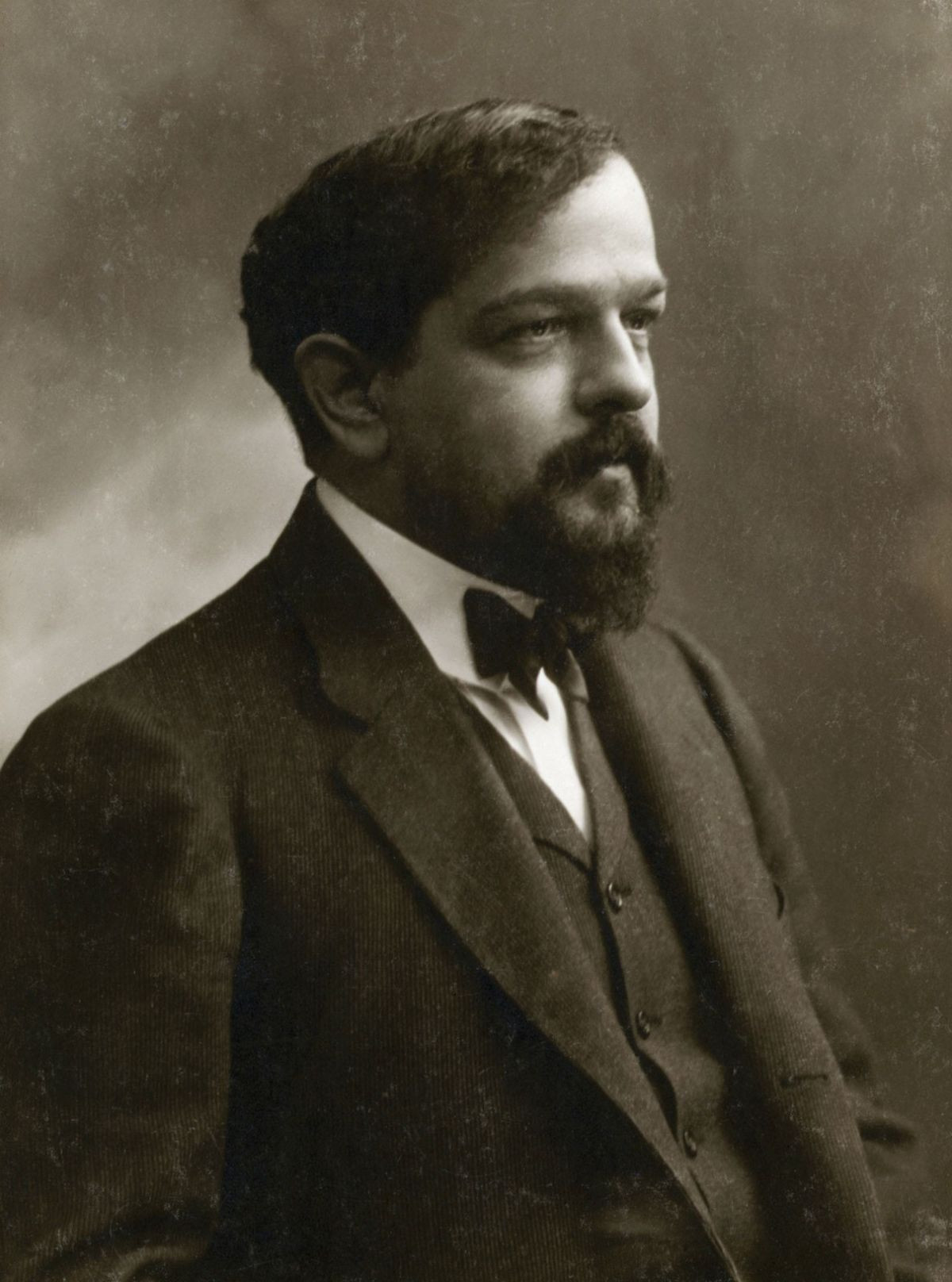Program Booklet
Sunday morning: Elgar's Cello Concerto
Sunday , November 9
11:00
hour until approximately 12:15 p.m.
A Sunday morning to rejoice at: from Elgar's intimate cello sounds to Ravel's ecstatic Boléro, with Debussy's sun-drenched Iberia in between.
📳
Please put your phone on silent and dim the screen so as not to disturb others during the concert. Taking photos is allowed during applause.
Programme
Edward Elgar (1857-1934)
Cello Concerto in E, op. 85 (1919)
Adagio - Moderato
Lento - Allegro molto
Adagio
Allegro - Moderato - Allegro ma non troppo - Adagio
Claude Debussy (1862-1918)
Ibéria from 'Images pour orchestre' (1905-1908)
Par les rues et par les chemins
Les parfums de la nuit
Le matin d'un jour de fête
Maurice Ravel (1875-1937)
Boléro (1928)
What are you going to listen to?
Start your Sunday morning with music that takes you to other worlds. In the hushed and emotional sounds of Elgar's Cello Concerto, played by the masterful cellist Leonard Elschenbroich, you will find space to come to yourself for a moment. Under the inspired direction of principal conductor Jun Märkl, we roll out a tapestry of warm, rich melodies. It is music that not only moves, but also feels like a story you get to fill in yourself.
Elgar
The horrors of World War I had deeply affected Edward Elgar. Constant reports came in of tens of thousands of British soldiers killed, an amount almost unimaginable. And in his summer cottage on the coast in Sussex, he could hear the artillery fire across the street daily. In March 1918, the composer had to go to the hospital to have his inflamed tonsils removed, at that time a painful and not harmless operation for someone of age. A few days after the operation - he was still in the hospital - he gestured for a piece of note paper and wrote down a motif, to which he paid no further attention. A few months later he carefully set himself back to work and in a fairly short time a violin sonata, a string quartet and a piano quintet were produced.
Elgar had not forgotten the motif from the hospital, however, and slowly the idea of using it in a cello concerto grew. He had already made some sketches, which he showed to conductor Landon Ronald and cellist Felix Salmond. Their enthusiasm gave him great impetus to finish the work. Every morning he was working at his piano before five in the morning, and by the end of July he could report that the Cello Concerto was nearly complete. The premiere conducted by Elgar himself with Salmond as soloist on October 27, 1919, went downright miserable, which was mainly due to the far too short preparation time. But within a year of this fiasco, the work experienced more than a hundred performances worldwide.
Debussy
Claude Debussy liked to fuse past and present in his music. His artistic starting point was mainly French music, especially composers from his own circles, such as Massenet, Lalo, Chabrier, Gounod, Bizet and Fauré. But he found his own style, so recognizable, through Wagner, Mussorgsky, Gregorian chant and exotic music. His Images pour orchestre (1905-1912) is a triptych that shows the composer's impressionistic style at its peak. Played this morning, Ibéria, the second movement from Images, is a declaration of love to neighboring Spain and contains rare folklore for Debussy, but without concrete Spanish melodies. According to Debussy, he had not adopted the Spanish melodies, but imbibed them so that they had become part of his system. Ibéria, which itself again consists of three movements, excels with an original mixture of orchestral colors and is larded with folk and traditional melodies. The nocturnal Spanish darkness is almost palpable. And rattling castanets and Moorish arabesques accompany the exotic sound world. Debussy's symphonic journey ends with an "image" of awakening nature in a French spring.
Ravel
One of the best dancers of the Ballets Russes in Paris was Ida Rubinstein. In 1911, however, she left the company and founded her own "Ballet Ida Rubinstein. In 1928, she approached Maurice Ravel with a request for a new ballet. A concept grew of alternately continuously repeating two melodies in an increasingly strong crescendo to a deafening climax. Despite the originality of this idea, Ravel had a hard head about whether it would be a success, especially since he himself did not take his Boléro, as the ballet was to be called, very seriously. On top of that, Ida and he had completely different ideas about the choreography. In her version, it was a Spanish dancer jumping on a table in an inn and performing an increasingly ferocious dance, encouraged by the bystanders. Ravel, on the other hand, envisioned an open field with a factory in the background, from which increasingly loud monotonous mechanical sounds resound and to which a dancer dances ever more wildly. The music proved more powerful than the dance because the Boléro is rarely danced, played in the Concert Hall all the more.
Jan Jaap Zwitser and Kees Wisse
Prefer it on paper? Download a condensed printable version of this program.
Biographies

Residentie Orkest The Hague

Jun Märkl
.jpg/4a193cda130516bea857134bbeb308eb.jpg)
Leonard Elschenbroich
Be sure to stay in Amare after the concert to listen to a wind quintet from the Residentie Orkest in the Arts Square and dance with movement coach Meike Portegies.


Fun Fact
Ravel at the RO
Ravel performed his own work once with the Residentie Orkest, on October 31, 1923, at Theater Diligentia. The reviewer of the Algemeen Handelsblad was so astonished by the "superhuman beauty of the Ravel orchestra, with all its wonderful colors, suggestive melodic lines, dream glories that have become essential, magical workings and delights" that he could not write a "normal" report...
Maurice Ravel was also photographed on this day. We see (from left to right) concertmaster Sam Swaap, principal conductor Peter van Anrooy, Maurice Ravel, violist Jean Devert, cellist Charles van Isterdael, violinist Adolphe Poth and impresario Géza de Koos.
-nl-hahga_8100-01_1_bewerkt-klein.jpg/3307cb8910b33af5db6e39d219db2791.jpg)
RO QUIZ
Debussy was fond of?-
Dining out
Good answer: cats
Debussy loved cats and even preferred cats to humans. He always had one or more Siamese cats around him and even wrote letters describing their behavior as if they were aristocratic roommates. He also allowed them freedom; they walked over the scores while he was working and they played with his pencils. (Photo by Gaspard-Félix Tournachon)
-
Cats
Good answer: cats
Debussy loved cats and even preferred cats to humans. He always had one or more Siamese cats around him and even wrote letters describing their behavior as if they were aristocratic roommates. He also allowed them freedom; they walked over the scores while he was working and they played with his pencils. (Photo by Gaspard-Félix Tournachon)
-
The month of November
Good answer: cats
Debussy loved cats and even preferred cats to humans. He always had one or more Siamese cats around him and even wrote letters describing their behavior as if they were aristocratic roommates. He also allowed them freedom; they walked over the scores while he was working and they played with his pencils. (Photo by Gaspard-Félix Tournachon)

Good answer: cats
Debussy loved cats and even preferred cats to humans. He always had one or more Siamese cats around him and even wrote letters describing their behavior as if they were aristocratic roommates. He also allowed them freedom; they walked over the scores while he was working and they played with his pencils. (Photo by Gaspard-Félix Tournachon)
Today in the orchestra
Help The Hague get music!
Support us and help reach and connect all residents of The Hague with our music.


View all program booklets
Be considerate of your neighbors and turn down your screen brightness.


